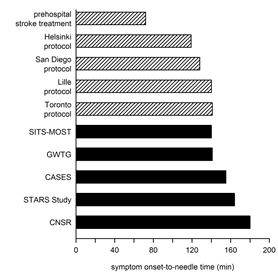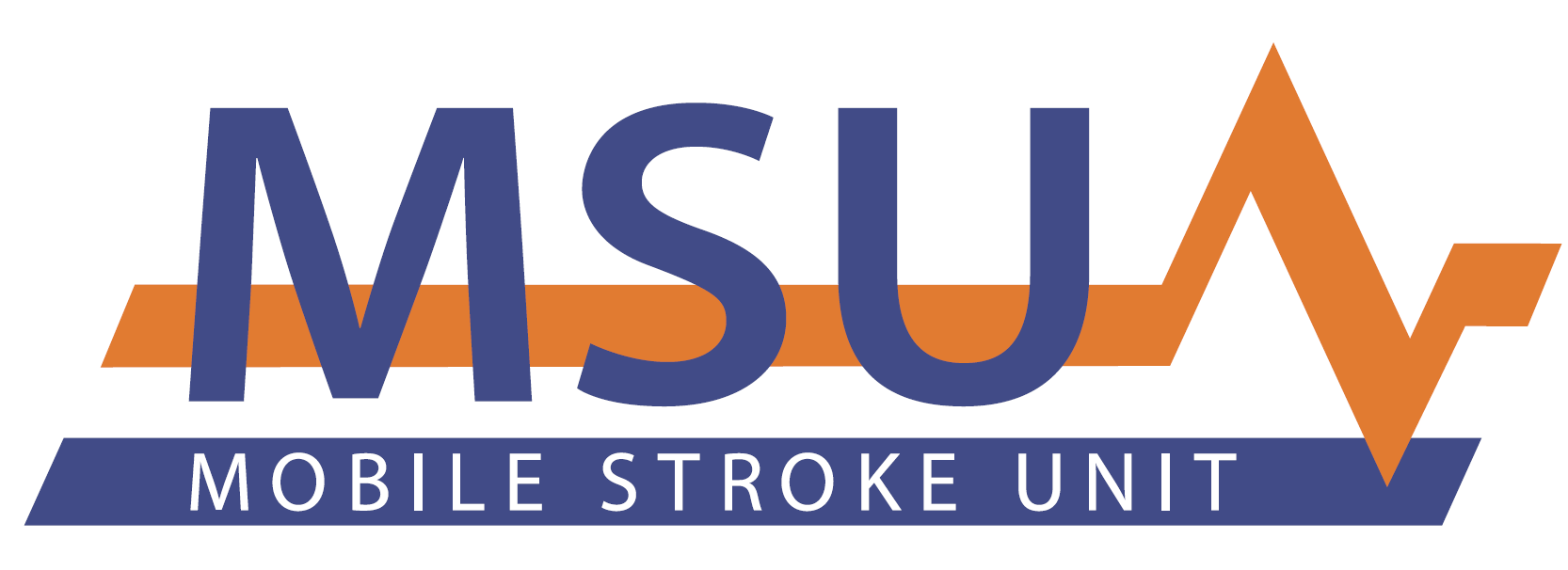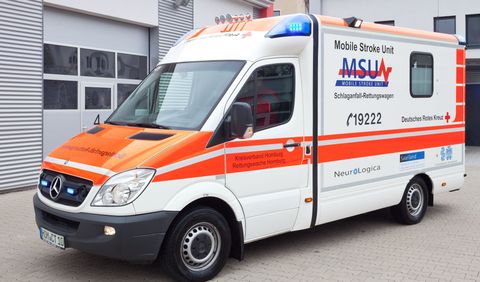Further Benefits
of the MSU
• Faster delivery of thrombolysis: Stroke treatment at the emergency site still holds the world record for time to thrombolysis (Walter et al., 2012, Fassbender et al., Lancet 2013, Fassbender et al., Lancet Neurology 2017).

Comparison of treatment times by prehospital stroke management (upper bar) versus earlier described studies to improve time management (grey) versus data from stroke registries (black).
A further benefit is that efficiency at interactions between different health care professionals (EMS, clinical professionals, etc.), is improved since diagnoses and treatment are in the hands of a single specialized MSU team.
• With the individualised care, correct triage decisions can be made with regard to the target hospital. By diagnosing the type of stroke (IS/HS, LVO) in the prehospital setting, the correct triage decision with regard to the target hospital (closer primary stroke centre versus more distant thrombectomy-capable comprehensive stroke centre can be made. Transporting the patient to the correct type of stroke centre in the first place has additional benefits. The patient and healthcare system is able to avoid treatment delays, overcrowding of emergency rooms and expensive secondary interhospital transfers.
Further medical options
• Prehospital decisions regarding the need for transfer to a neurosurgical centre (in the case of traumatic brain injury).
• Guideline and aetiology specific adjustment of physiologic variables such as blood pressure, which differ in ischemic and haemorrhagic stroke.



